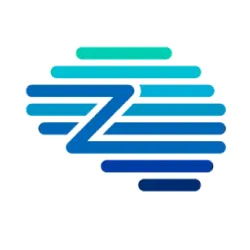TL;DR
- Traditional forecasting methods like spreadsheets fail scaling and emerging enterprises facing volatile supply chains.
- Inaccurate forecasting leads to overspending, cash flow stress, and missed growth opportunities.
- Procurement Forecasting for Emerging Enterprises powered by AI and ML delivers real-time, predictive insights.
- Machine learning improves accuracy with scenario modeling, anomaly detection, and dynamic updates.
- Predictive forecasting enables budget discipline, stronger supplier negotiations, and better growth planning.
- CFOs in fast-growing enterprises can expect measurable ROI within 12–18 months of adoption.
Why Forecasting Is Procurement’s Next Frontier
For many mid-market CFOs, procurement forecasting is a guessing game. Budgets are set annually, adjustments happen quarterly, but spend behavior shifts daily. Without accurate forecasting, companies either overspend and scramble to recover, or underspend and miss growth opportunities.
Traditional forecasting methods, built on spreadsheets and historical averages, cannot keep pace with modern growth. Emerging enterprises face volatile supply chains, shifting supplier costs, and unpredictable demand. Machine learning (ML) offers a way forward, turning procurement forecasting into a dynamic, predictive capability.
The Limitations of Traditional Procurement Forecasting for Scaling Enterprises
Procurement leaders relying on manual methods often run into three common problems:
- Static Data – Historical averages ignore seasonality, demand spikes, or supplier risk events.
- Lagging Visibility – By the time reports are generated, spend patterns have already changed.
- Human Bias – Forecasts shaped by intuition or selective data create inaccuracies.
These limitations make traditional forecasting a poor fit for enterprises experiencing rapid growth and external volatility.
How Machine Learning Transforms Procurement Forecasting
Predictive spend forecasting applies ML models to procurement and financial data, enabling:
- Pattern Recognition: Algorithms identify recurring spend behaviors across categories.
- Scenario Modeling: ML simulates “what-if” scenarios, such as price volatility or supplier disruption.
- Real-Time Adjustments: Forecasts update automatically as new data flows in.
- Anomaly Detection: Outliers in spend are flagged early, preventing budget overruns.
- Integration with Dashboards: Predictive insights feed directly into CFO and procurement reports.
This transforms forecasting from reactive to proactive, giving finance leaders a forward-looking view of spend.
Procurement Forecasting for Emerging Enterprises: Why It Matters Most
For mid-market companies, predictive forecasting provides tangible benefits:
- Budget Discipline: Prevents overspending by anticipating cost spikes.
- Cash Flow Resilience: Improves liquidity planning by aligning payments with incoming revenue.
- Supplier Negotiation: Predicting demand allows better contract structuring and volume commitments.
- Strategic Agility: Enables faster pivots when market conditions change.
In short, predictive forecasting provides CFOs with confidence to scale without being blindsided by unexpected costs.
The Cost of Inaccurate Forecasting for Emerging Enterprises
For scaling enterprises, inaccurate procurement forecasting is more than an inconvenience — it’s a growth blocker. When spend forecasts don’t align with real-world demand and supplier dynamics, enterprises face three costly outcomes:
- Overspending and Budget Overruns: Companies overshoot budgets when they fail to anticipate supplier price fluctuations or demand spikes.
- Missed Growth Opportunities: Underspending leads to stockouts, missed sales, or delayed expansion plans.
- Cash Flow Stress: Poorly aligned forecasts disrupt working capital, leaving finance teams scrambling to cover unplanned expenses.
According to industry benchmarks, mid-market firms can lose 2–5% of annual procurement budgets due to inaccurate forecasting. For emerging enterprises with lean margins, these losses directly undermine growth momentum.
Case Example: Predictive Forecasting in Action
Consider a mid-sized manufacturing firm in Latin America struggling with volatile raw material prices and supplier delays. Relying on spreadsheets left procurement leaders blindsided by sudden cost hikes.
After adopting an AI-driven procurement forecasting solution, the company was able to:
- Anticipate raw material price fluctuations two months in advance
- Reduce budget overruns by 18% in the first year
- Improve supplier contract negotiations by committing to volumes with better visibility
This shift turned procurement from a reactive cost tracker into a proactive growth partner, giving CFOs confidence to scale operations despite market volatility.
Key Features of Effective Procurement Forecasting Tools
Not all forecasting solutions are created equal. For emerging enterprises, the most effective platforms combine:
- AI and Machine Learning Models: Continuously learn from procurement, supplier, and market data.
- Real-Time Dashboards: Provide instant visibility into spend patterns and forecast accuracy.
- Scenario Modeling: Simulate supplier disruptions, price volatility, or sudden demand surges.
- Supplier Risk Integration: Incorporate risk indicators such as delivery reliability or geopolitical exposure.
- Finance Integration: Connect seamlessly with ERP and treasury systems to align forecasting with cash flow planning.
These capabilities ensure procurement forecasting scales with enterprise growth rather than becoming another bottleneck.
The Future of Procurement Forecasting in Emerging Enterprises
As enterprises grow, procurement forecasting will evolve beyond static reporting into an intelligent, connected capability. Key trends shaping the future include:
- Autonomous Forecasting: AI systems that continuously self-correct with minimal human intervention.
- End-to-End Integration: Linking procurement forecasting with sales, supply chain, and treasury planning.
- Global Supply Chain Resilience: Factoring in geopolitical risks, compliance changes, and sustainability targets.
- Predictive Collaboration: Sharing forecasting insights with suppliers to co-create resilient supply strategies.
For CFOs and procurement leaders in emerging enterprises, adopting predictive forecasting early positions them ahead of competitors who remain dependent on outdated methods.
Conclusion
Forecasting spend should not be a guessing game. For scaling and emerging enterprises, predictive forecasting powered by AI and machine learning provides the discipline, visibility, and agility needed to scale. By anticipating costs, identifying risks, and informing strategy, procurement evolves from a reporting function into a forward-looking partner to the business.
Ready to move beyond guesswork? Book a demo of Zycus’ Procurement Forecasting for Emerging Enterprises solution.
Discover how Zycus helps fast-growing enterprises improve forecasting accuracy, strengthen supplier relationships, and unlock smarter growth.
FAQs
Q1. What is predictive spend forecasting for emerging enterprises?
Predictive spend forecasting uses AI and machine learning to analyze procurement, supplier, and market data. For emerging enterprises, it provides real-time insights into future costs, reducing reliance on manual spreadsheets and guesswork.
Q2. How does machine learning improve procurement forecasting?
Machine learning models identify patterns in spend, simulate “what-if” scenarios like supplier delays or price hikes, and update forecasts dynamically. This makes procurement forecasting more accurate, agile, and scalable for fast-growing enterprises.
Q3. Why is procurement forecasting important for scaling businesses?
For scaling enterprises, inaccurate forecasts cause overspending, cash flow strain, and weak supplier negotiations. Procurement forecasting ensures budget discipline, improves liquidity planning, and helps enterprises pivot quickly in volatile markets.
Q4. What tools enable procurement forecasting for emerging enterprises?
AI-driven procurement platforms with ML models, real-time dashboards, scenario analysis, and ERP/finance integrations make forecasting more reliable and actionable for mid-market companies.
Q5. What is the ROI of procurement forecasting in fast-growing enterprises?
ROI comes from reduced budget overruns, better supplier contracts, improved cash flow visibility, and smarter growth planning. Many emerging enterprises see measurable ROI within 12–18 months.
Related Reads:
- Procurement KPIs That Matter for Fast-Growing Companies
- How to Prove Procurement Software ROI (With Real Numbers)
- AP Automation for Emerging Enterprises: Stop Ghost Invoices and Hidden AP Errors
- Real-Time Budget Visibility: Tools and Techniques for Emerging Enterprises
- The Ultimate Guide to Accounts Payable Software for Emerging Enterprises
- The Adoption Deficit: Solving the Procurement Change Challenge in Emerging Enterprises
- From Automation to Autonomy: The Evolution of AI in Procurement
- From Chaos to Control: Fixing Vendor Master Data and Rogue Spend with AI
- Six Must-Have Procurement Reports for Emerging Enterprise
- AI-Driven Contract Lifecycle Management: Getting Ahead of Renewals and Obligations
- Smaller Teams, Bigger Stakes: Solving the Procurement Overload in Emerging Enterprises
- Half the Budget, Twice the Pressure: The ROI Trap in Emerging Enterprise Procurement
- Stuck Between Excel and Enterprise: The Emerging Enterprise Procurement Tech Trap
- Flying the Plane While Fixing the Wings: The Procurement Paradox in Emerging Enterprises








































